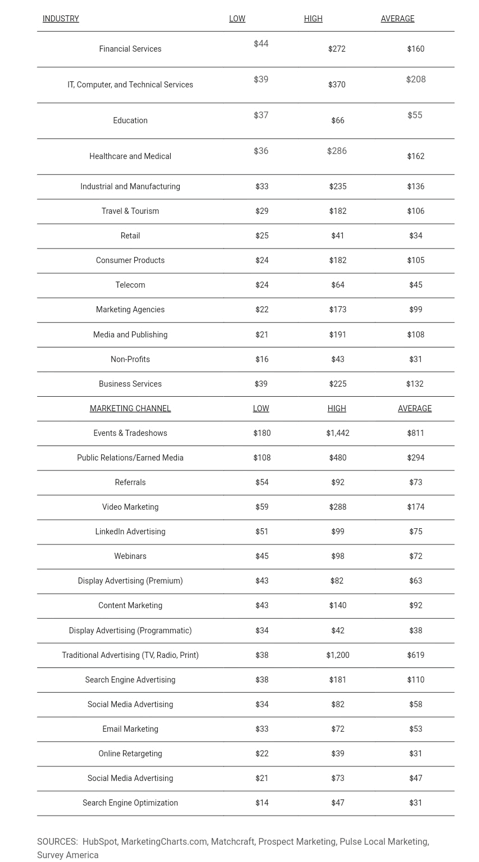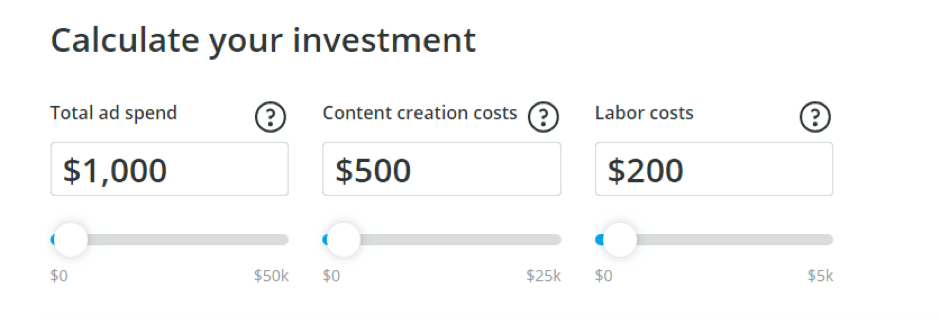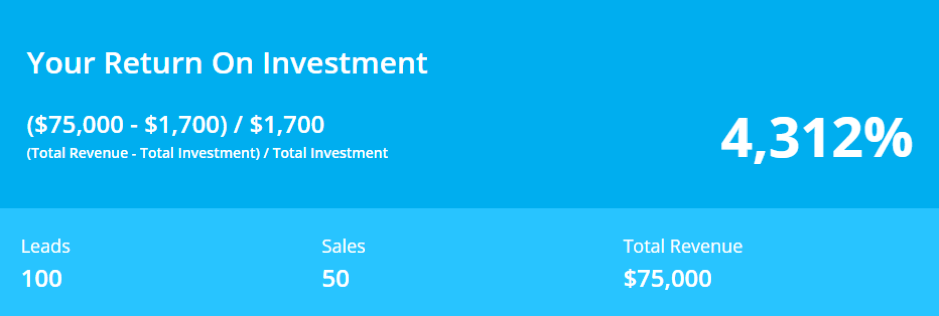How do you maximize lead acquisition from your budget? Through budget planning.
Capturing leads is an important milestone in your quest to acquire more customers. As a result, it makes sense if you aim to capture as many leads as possible from your website traffic.
Unfortunately, generating leads is a big challenge for most businesses.
According to the State of Inbound 2018 Report, 61% of marketers believe their top marketing challenge is generating traffic and leads.
However, businesses continue to invest more money into lead generation. For instance, 53% of marketers allocate more than half of their budget to lead generation. Consequently, businesses expect to acquire more leads.

How do you maximize lead acquisition from your budget? Through budget planning.
In this blog post, you'll learn seven vital tips to help you plan your lead acquisition budget.

1. Set your lead acquisition target
How many leads do you want to capture through your marketing campaign? How many leads do you need to hit your revenue targets?
Apart from stating the number of leads you want to capture, you also have to be clear about the type of lead you want it to be. Generally, there are 2 types of leads:
- Cold leads
- Warm (more qualified) leads
Capturing cold leads may be at a lower cost than warm leads, but it will take longer to nurture a cold lead and turn them to a customer. For instance, look at this lead capture form:

In this case, there will be many cold leads. Such a lead capture form is targeted at capturing leads in high quantity without much emphasis on the quality.
Likewise, it's difficult to know if a lead will be interested in your product or service through their email address alone. However, look at another lead capture form:

In most cases, this form will bring in a fewer number of leads (at a higher cost per lead) than the former example. But the leads captured through this form will likely be more qualified.
Someone who takes their time to fill such a long-form will usually have a considerable level of interest in the service. Furthermore, having more details about the leads can help you categorize your leads and identify ideal prospects.
With your goals, you can state the quantity and quality of leads you want to acquire. Consequently, this will affect your budget.
2. Define the lead acquisition funnel
There are many ways to capture leads. Depending on your goals and ideal audience, some lead acquisition methods will be more effective than others.
Some examples of lead acquisition funnels include:
- Google ads to landing pages
- Social media ads to landing pages
- Email to landing pages
- Content upgrades in blog posts
- Guest posts to landing pages
- Facebook lead ads
Ideally, the best practice is to use all of the different channels where you're likely to reach your potential leads.
After identifying these channels (from your buyer persona), define the funnels you want to use to capture leads for a particular product or service. You might also need to create different landing pages for the funnels. For instance, separate landing pages for Google Ads and Facebook ads.
Here's an example of a Facebook ad by Outbrain:

When you click through the ad, you'll "land" on this landing page:

By defining your lead acquisition funnels, you'll have an idea of the number of marketing channels and landing pages you need.
Also, from your landing page conversion rates, you know the number of visitors needed to capture the target number of leads. With your cost-per-click (CPC) multiplied by the number of required visitors, the amount you'll spend to acquire leads becomes clear. But, of course, there are more costs to consider.
3. Calculate cost of landing page design, copy, and lead magnet
Getting a potential lead to click your ad is the first step towards acquisition. However, a poor landing page could waste your effort and money.
Therefore, you need to design an effective landing page. Some traits of an effective landing page include:
- Simplicity
- High load speed
- Lots of white space between text
- Visual elements (using images or video)
Apart from the landing page design, you have to calculate the cost of the landing page copy.
In some cases, you can promise a lead magnet like an e-book or whitepaper to improve conversions. In this case, consider the cost of creating such a lead magnet.
Download our Individual Member Resource – Marketing budget spreadsheet template
This set of spreadsheets will help you create a well thought out budget and track your spend across the year.
Access the Marketing budget spreadsheet template
4. Calculate the average cost per lead for your industry
There's no general cost per lead across all industries that will work for your campaign. Because cost per lead can vary wildly across industries.
For example, here’s a table from Integrated Marketing Association showing the average cost per B2B lead across industries and marketing channels:

If you have a long history of advertising in the industry, you can use your data to calculate the average cost per lead. Another point to consider is that even for the same industry, the average cost per lead might differ on different marketing channels.
Use this simple formula:
The average cost per lead = total lead acquisition cost/total number of leads acquired
To maximize your budget, ensure you find the most accurate data for the average cost per lead in your industry.
5. Calculate lead to customer conversion rates
How often do you convert your leads to customers? This will vary across different businesses. If you’ve never launched a campaign, then you can find benchmark values for your industry.
If you’ve been running similar campaigns, you can get the lead to customer conversion rates from your data. The conversion rates will help you forecast the potential number of customers you can acquire from the number of target leads.
6. Calculate the customer lifetime value
To compare your investments to your possible income, you have to calculate the customer lifetime value for your business. Put another way, how much will a customer spend during their time as a customer?
A simple formula you can use is:
Customer lifetime value = average annual customer value × average subscriber lifespan
If you sell products, your CLV could depend on whether you sell a single product or upsell other products to current customers. With CLV, it's easy to compare customer acquisition costs (calculated from lead to customer conversion rates) to your income.
Then you can go on and calculate your potential ROI.
7. Calculate potential ROI
To get the value of your potential ROI for a marketing campaign, you have to compare the cost of customer acquisition to the customer lifetime value. And you can calculate the cost of acquiring a customer using this formula:
Cost of customer acquisition = cost of lead acquisition/lead to customer conversion rates
After obtaining a value for customer acquisition, you can use this formula to calculate your potential ROI:
ROI = customer lifetime value/cost of customer acquisition × 100%
Alternatively, you can use tools to calculate ROI. An example is the Hootsuite social ROI calculator. All you have to do is enter your investment into the tool.

Then calculate the return.

After doing this, the tool will calculate your ROI.

Another useful tool for this purpose is Google Analytics. It can track the number of leads acquired on your landing pages. Furthermore, you can assign a value to this goal.

Conclusion
Planning a lead acquisition budget is vital before engaging in a campaign. First, it helps you to focus on your best channels and watch spending.
Second, you can easily cut back when exceeding your budget. And most importantly, a lead acquisition budget is vital to a more effective analysis after your campaign.
By planning a lead acquisition budget, you can improve your upcoming campaign as well as future campaigns.


















